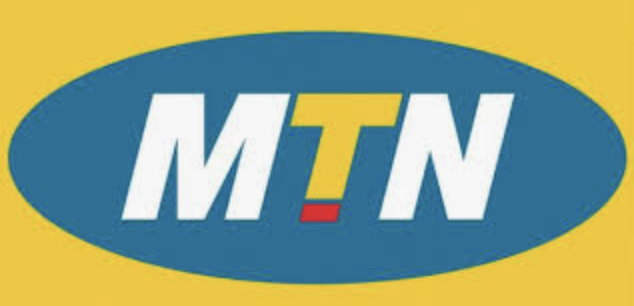…MTN will begin decommissioning its 3G network in 2025/2026
Key findings
…MTN considers 5G an innovation platform that could transform various aspects of business and livelihood beyond pure connectivity.
…Traditional business models and “ways of doing things” will not be sufficient for service providers to fully monetize emerging 5G opportunities. Network slicing is needed to enable revolutionary business models and service pricing.
…MTN’s 5G build-out strategy is based on meeting evolving market demands with the timely deployment of the relevant technology enablers, in order to optimize the potential for monetizing new use cases.
FRI, 02 SEPT, 2022-theGBJournal| Continued investment in 4G – and the expansion of 5G – technologies are expected to play a crucial role in realizing MTN’s ambitions and will enable it to meet evolving market demands and monetize new use cases across markets in the Sub-Saharan Africa region.
MTN Group, South Africa, has defined its strategic “Ambition 2025” plan. It is built on MTN’s current market position, where connectivity is the foundation, while platforms are gradually expanded to capture new growth opportunities and deliver value. In this context, 5G network deployment and evolution across markets plays an important role in enabling new services for consumers, enterprises, industries and society. For MTN, 5G is an innovation platform with the ability to transform various aspects of business and livelihoods beyond pure connectivity.
Data connectivity and usage – drivers for revenue growth
In the Sub-Saharan Africa region, connectivity is still dominated by 3G and 2G technologies, with 4G only making up around 20 percent of mobile subscriptions by the end of 2021.1 However, demand for data connectivity and digital services is increasing across markets. Operating in 18 markets across the Middle East and Africa, MTN is pursuing these new growth opportunities.
Continuous network modernization and coverage build-out, supported by MTN’s Rapid Rural Rollout (R3) program, has enabled it to capture strong new subscriber growth and stimulate increased data usage.
This has resulted in increased data service revenues, despite price pressure in the markets. In South Africa, MTN networks experienced strong data growth as the number of customers actively using the internet grew by 12.5 percent, leading to a mobile data traffic growth of almost 60 percent in 2021. The average mobile data traffic per pre-paid subscriber was 2.3GB and 10.3GB for post-paid subscribers.
MTN considers data as a main driver of revenue growth over the medium term. Initiatives to stimulate further data adoption include data service bundling, segmented value propositions and the development and launch of freemium data propositions, supported by strategic over-the-top partnerships.
MTN’s strategic priorities up to 2025
MTN continues to invest in 4G technologies and has expansive plans for 5G to realize the opportunities it has identified to evolve and expand its service offerings for the consumer, enterprise and industry segments.
MTN’s strategic priorities are articulated in its Ambition 2025 strategic framework, which is underpinned by 10 key technology strategic pillars intended to enable growth in connectivity and platforms businesses. Some of the most important pillars are ensuring best-in-class, ubiquitous access across mobile and fixed networks, maintaining network leadership and efficiencies, and the monetization of infrastructure. Other priorities include investment in sustainable technologies and zero-touch, service-aware networks. 5G networks will play an essential role in delivering on the technology pillars to realize the Ambition 2025 plan.
Monetization of network infrastructure includes a network-as-a-service (NaaS) strategy, where network sharing (national roaming, MOCN and MORAN) is the starting point, followed by 5G network slicing which enables exposure of network functionality via APIs to build new enterprise services. An additional step will be the monetization of data exposed via online third parties.

Building 5G for timely monetization
MTN’s 5G network build-out strategy is based on meeting evolving market demands with the timely deployment of the relevant technology enablers, in order to optimize the potential for monetizing new use cases. So far, 5G subscriber uptake has been driven by a combination of increased 5G device penetration and fixed wireless access (FWA) subscriber uptake. The average 5G subscriber mobile data consumption is approximately twice that of 4G subscribers.
Mobile broadband and FWA are currently the main 5G services marketed by MTN. It stresses better user experience as the main value, in a manner that relates to consumer needs, rather than bandwidth and latency which are not relative to the consumer. Interest in high-speed, good-quality broadband increased as working from home practices spread during the pandemic. 5G FWA will compete with fiber-to-the-home as an alternative, cost-efficient home broadband solution.
The deployment of 5G SA architecture, enabling network slicing, will be driven by consumer and enterprise use case evolution over time. In the 2023–2024 timeframe, the initial target will be consumers (enhanced mobile broadband/FWA). This will be followed by deployments for enterprises, as ultra-reliable low-latency communications (URLLC) for critical services – which are crucial for high-end industrial applications – and 5G-era massive machine-type communications (IoT) use cases start to emerge. Over-the-top services will also be an important offering to create stickiness.
The challenge of migrating to SA architecture is not related to the technology as such, but rather how to monetize these new types of services, while also adhering to local market regulations related to net neutrality.
The enterprise opportunities
5G will enable a range of new services across different sectors, such as mining, manufacturing, utilities and agriculture. MTN is sharing information with enterprise customers and industry verticals about the value of 5G connectivity and low latency for optimizing its operations, as well as the introduction of new services. Dedicated private networks are already being deployed in proof-of-concept trials to validate the value of new services. An AI-based face recognition system at mining sites is one example of a service being evaluated – this is currently 4G based, but will evolve to 5G.
According to MTN, the main new opportunities in the African market that can be addressed with 5G technologies are related to areas such as virtual education, industrial automation, telemedicine, remote health care and smart cities.
MTN’s 5G deployment strategy
5G is still in its infancy in South Africa. Within the country, MTN is a leading service provider, with around 35 million mobile subscribers. Of these, about 50 percent are active mobile data users. At around USD 6.30, it has the highest blended average revenue per user (ARPU)2 of all service providers in South Africa.
MTN launched its 5G commercial services in June 2020 and reached 200,000 5G subscribers by the end of 2021. Continued 5G subscriber uptake will be strongly impacted by the availability of a wider range of low-cost 5G smartphones. In the recent spectrum auction, MTN acquired 100MHz of spectrum across three frequency bands: 40MHz in the 3.5GHz band, 40MHz in the 2.6GHz band and 2x10MHz in the 800MHz band. MTN’s initial 5G network deployment strategy focuses on high-value urban areas and hot spots, where they will deploy high-quality 5G New Radio (NR) equipment on the mid-band 3.5GHz frequency (40MHz bandwidth) as a capacity layer. Initially, hot spots being targeted include key markets, university locations, institutions and residential areas serving consumers with high data usage potential.
Long term, a coverage layer on the 700MHz band will ensure that regulatory requirements for 5G coverage are fulfilled. Deployments in high-band spectrum (mmWave) will be carried out on a more limited basis in areas with high-capacity traffic demand and in areas for deployment of FWA services. 5G is also available in some areas through dynamic spectrum sharing (DSS), a technology which allows both 4G and 5G to be deployed in the same band and on the same radio. MTN has deployed about 1,000 5G mobile sites and aims to reach 25 percent 5G population coverage by the end of 2022, and 60 percent by 2025.
MTN will begin decommissioning its 3G network in 2025/2026, with 4G and 5G becoming the principal technologies used to deliver telecoms services to its customers. In Sub-Saharan Africa, 5G subscriptions will represent around 10 percent of all mobile subscriptions by 2027,3 with South Africa expected to lead the adoption rate in the region. Local market research forecasts that the number of 5G subscribers in South Africa is expected to reach 11 million by 2025.
Strategy execution – addressing the new opportunities
MTN knows that the traditional business models and “ways of doing things” will not be sufficient to enable it to make the most of the emerging 5G opportunities. To really benefit from 5G’s capabilities, MTN will need to tie its 5G vision and roadmap closely to its digital transformation strategies. It will need to introduce network slicing if it expects to see revolutionary business models and service pricing. Network slices will be created on demand and will be independently controlled and managed with a degree of customization that could previously only be achieved with dedicated physical networks. Network slices allow partners to integrate into network platforms in a similar way to a dedicated private network, but with far less effort. They will also enable MTN to expand its role from connectivity to other areas of the value chain – such as cloud and edge services, orchestration and applications.
… This article written by Ericsson in cooperation with MTN, is Extract from the Ericsson Mobility Report 2022
Twitter-@theGBJournal| Facebook-The Government and Business Journal|email: gbj@govbusinessjournal.ng|govandbusinessj@gmail.com










